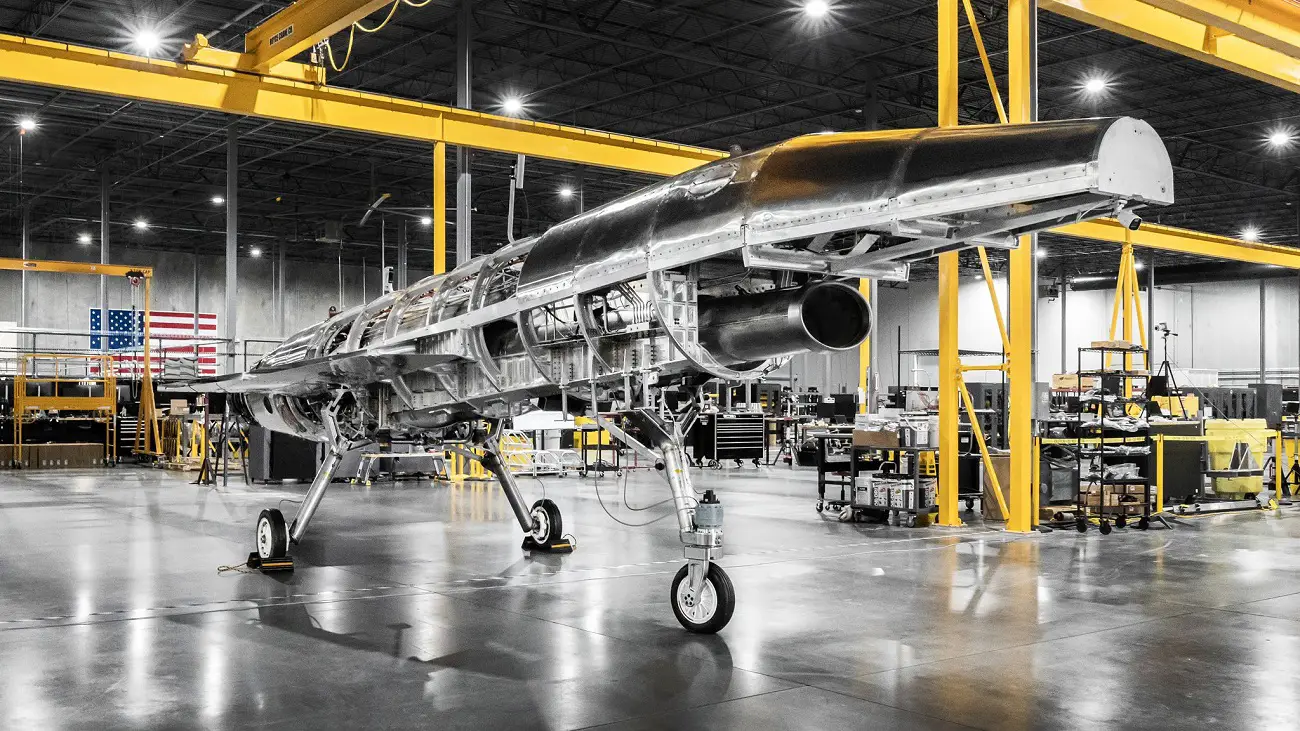The hypersonic aviation startup company Hermeus revealed their pioneering Quarterhorse Mk0 fully integrated vehicle on October 12th. This groundbreaking creation is poised to validate a comprehensive array of systems, encompassing electrical, hydraulic, pneumatic, avionics, steering, and propulsion, marking a significant step forward in the journey toward hypersonic travel. The Quarterhorse is a remotely piloted high-speed aircraft engineered with the audacious objective of putting the new Chimera engine to the ultimate test. This cutting-edge “turbine-based combined cycle” (TBCC) engine, known as Chimera, is set to revolutionize high-speed aviation. At lower speeds, Chimera functions in turbojet mode, adapting to changing conditions by employing a pre-cooler to optimize air temperature. This enables the engine to deliver peak performance before seamlessly transitioning into ramjet mode, facilitating takeoff from standard runways and achieving high-Mach speeds. Notably, this technology aims to shatter the longstanding airspeed record held by the iconic SR-71.
In August 2020, Hermeus received a $1.5 million contract from the United States Air Force to develop their proposed aircraft to enter and serve the American presidential fleet in the future and function as a possible Air Force One. The aircraft would be a derivative of Exosonic’s 70-seat Mach 1.8 airliner that the company is hoping to roll out in 2025. The contract will support Exosonic’s efforts to develop and modify the company’s commercial supersonic airliner to serve as an executive transport vehicle. In August, the Air Force awarded a $1.5 million contract to Hermeus, which is proposing a Mach 5 commercial aircraft. As with the Exosonic contract, Hermeus will use the money to adapt its design for executive transport. Meanwhile, the next two VC-25 aircraft, the replacement for the Boeing 747-400s normally referred to as Air Force One, are currently in pieces and in the process of being rebuilt to meet presidential transport requirements.

On November 17, 2022, Hermeus made an exhilarating announcement: successful transition testing was conducted at the Notre Dame Turbomachinery Lab, a crucial milestone in the development of Chimera. Astoundingly, the entire design, construction, and testing of Chimera took just 21 months and a modest $18 million budget. Hermeus has garnered substantial support for the Quarterhorse flight test program, with $60 million in funding secured from both the U.S. Air Force and venture capital firms in 2021. While the Mk0 prototype will not take to the skies, it will play a pivotal role in validating Hermeus’ visionary Flight Deck’s command and control system, showcasing their bold approach to aerospace development and manufacturing. With integrated hardware and software testing at its core, Hermeus embraces a culture of rapid iteration and innovation. As Mk0 prepares for taxi testing, it signifies a departure from conventional aerospace development, marking the dawn of a new era where hypersonic speed becomes a reality. The next phase is already in progress, with Quarterhorse Mk1 taking shape at The Factory.
Hermeus is a startup developing hypersonic aircraft to radically accelerate air travel. At Mach 5, more than twice the speed of the supersonic Concorde, passengers will be able to cross the Atlantic in 90 minutes. On the path to hypersonic passenger aircraft, Hermeus is partnering with government agencies including the US Air Force and NASA to develop a series of autonomous aircraft that derisk the technology and solve urgent national security challenges. These products provide the data and confidence necessary to certify, produce, operate, and maintain safe and comfortable commercial aircraft. Hypersonic aircraft have the potential to create trillions of dollars of new global economic growth per year, unlocking significant resources that can be utilized to solve the world’s greatest problems.















